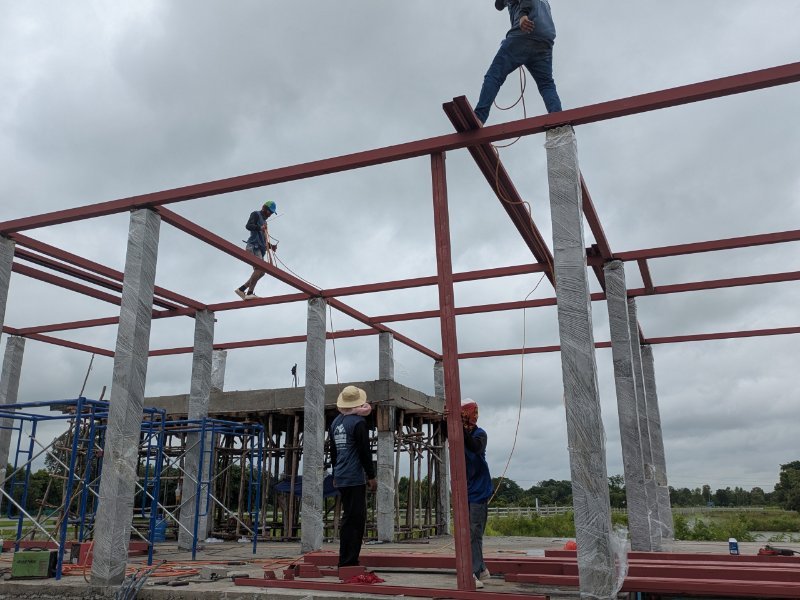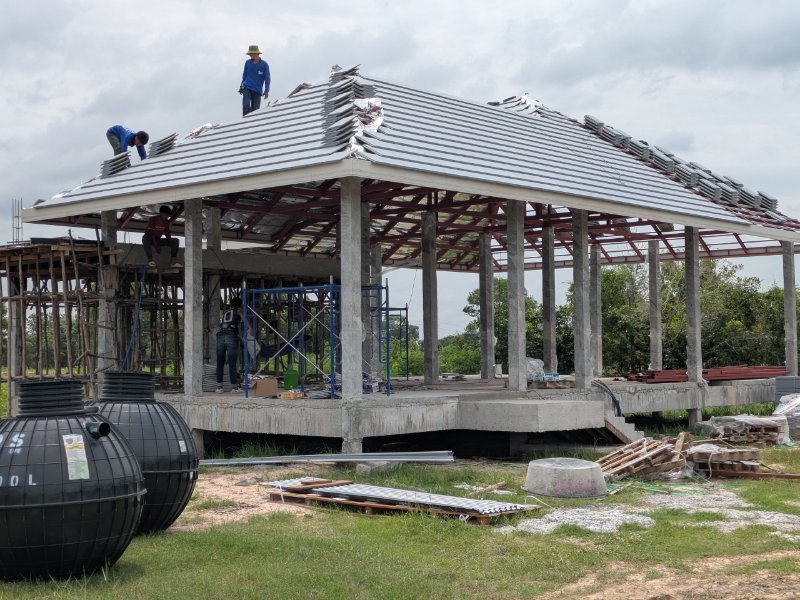
IsaanT
Member-
Posts
358 -
Joined
-
Last visited
About IsaanT
Profile Information
-
Location
Roi Et Province
Recent Profile Visitors
1,802 profile views
IsaanT's Achievements
-
I've got a Dell laptop that has been converted from Windows 10 to Ubuntu Linux. If you're mainly using a browser, it's a no brainer. Google Chrome (my browser of choice) works seamlessly on Linux. Also, it boots from cold in about 20 seconds. I've been running it for three years now and never had an issue. There are plenty of shops that could do the installation for you.
-
It is much better, and almost anyone can do it.
-
Can you give any more clues please?
-
Simplicity?
-
Military RTAF to Commission 8 AT-6 Light Attack Aircraft
IsaanT replied to Georgealbert's topic in Thailand News
I agree with you. I expect the answer is simply inertia - Putin's invasion of Ukraine has shown how effective drone warfare can be, and a lot of existing Air Force hierarchy and infrastructure won't be needed if drones are used to do a lot of the jobs that previously required aircraft. Drone warfare is here to stay, and Thailand is already using them against Cambodian troops. https://defencesecurityasia.com/wp-content/uploads/2025/07/tweeload_q8rptdtq2.jpg -
Accident Newlywed Painter Dies on First Day Back at Work
IsaanT replied to Georgealbert's topic in Southern Thailand News
It's a sad situation. We are having a house built. For a week recenty I watched the workers walking around at height as they were creating the roof frame. The pillars are 3.4 metres high and it's a solid concrete floor so it would be consequential if someone fell from that height. As their employer, I could only watch and hope they would be fine. The roofers were the same (and the house is raised 1m so that would be a 4.4 metre drop). Neither team made any attempt at minimising the risks. Back in the UK, Health and Safety is a powerful influence, with serious fines for breaches. Here, not so much... I guess it's part of my cultural adaptation. -
Bitcoin. The early days.
IsaanT replied to phetphet's topic in Jobs, Economy, Banking, Business, Investments
I understand that Bitcoin - and any other cryptocurrency - has no intrinsic value, which makes it completely speculative. That's not investment, that's gambling. I'm happy for you to help me - what don't I understand about Bitcoin? That it goes up forever? You should look at my history lesson again above if you believe that. I make regular profits on stock markets and Forex, and I don't have any nagging concerns about whether the bottom might drop out of my investments at any time... Each to their own. -
Bitcoin. The early days.
IsaanT replied to phetphet's topic in Jobs, Economy, Banking, Business, Investments
Indeed. Warren Buffett famously has a cash stockpile of over $350 billion because he can't find sensible valuations to invest in. He's sitting it out but he'll pile in again when a correction resolves this. A case of irrational exuberance occurred on Wednesday night, when the S&P500 Futures market rose overnight more than 70 points from Wednesday's official close. Spotting this, and knowing that it would invariably revert, I put many pounds per point on it to go down (at 6423, if you follow these things). As of Friday night, it's fallen around 200 points, and it's not over yet. If I ever spot a similar opportunity on Bitcoin, I'd short that too. -
Bitcoin. The early days.
IsaanT replied to phetphet's topic in Jobs, Economy, Banking, Business, Investments
Personally, I'd disagree but I recognise that you might have no time for an alternative opinion, and that's OK. The rise in Bitcoin exists because of greed, fear of missing out, and new buyers being willing to pay more than the last ones did; in two words: irrational exuberance. Back in 2012 I worked with a colleague who had 6,000 bitcoins. He'd had them for many years at that time having got in right at the beginning, and he wasn't remotely interested in selling them. I occasionally wonder if he still has them but I've long since lost touch with him. Bitcoin has no intrinsic value. One day, as is always the case in the long term with these things, the bubble will burst. At first, holders will be shaken but will quickly try to reassure themselves that the price will rebound and restore the damage. In the meantime, the price will continue down. Because of the entrenched mindset, desperate searches for more evidence of a rebound will be sought; and the price will continue down as they do. Most will exit too late. I've seen it happen. History has many precedents for this: a) Tulip Mania, Holland (1636-7), when tulip bulbs became a status symbol and investment object. Prices rose 20x in a matter of months. Prices suddenly crashed when buyers vanished. Many were ruined. b) South Sea bubble, UK (1720), when the South Sea Company was granted trade monopolies in South America (which never materialized). Shares were heavily promoted to the public. The share price rose from £100 to £1,000 in under a year. The bubble burst almost overnight. Prominent investors (including Isaac Newton) lost fortunes. c) Mississippi bubble, France (1720 - a bad year, apparently), when the Mississippi Company was granted control over France’s North American colonies. Backed by paper money issued by John Law’s Banque Royale. There was massive buying of shares and currency. In the end, paper currency became worthless, shares crashed, and the French economy destabilized. d) Roaring Twenties stock market bubble, USA (1920's), when there was widespread speculation on stocks, often with borrowed money (margin). The peak was in 1929, with record highs on the Dow Jones. The 1929 Wall Street Crash triggered a global economic depression lasting over a decade. e) Japanese Asset Price bubble (1986-91), when Japanese stocks and urban land prices skyrocketed. At the peak, Tokyo was worth more than all of California. The bubble burst in the 1990's, triggering the "Lost Decade". f) Dot-Com bubble (1995-2000), when internet-related stocks surged on hype, despite many having no revenue (sound familiar?). The NASDAQ quintupled in five years. By 2002, the NASDAQ had lost 78% of its value. g) US Housing bubble (2002-2007), when housing prices surged due to cheap credit, risky lending, and financial engineering (CDOs, MBSs). Then prices fell, subprime defaults exploded, and major banks failed. Global recession followed. It is interesting to note that history shows that there was overconfidence in the "safe" nature of property—similar to the "store of value" argument used for Bitcoin. History repeats itself. Time will tell. -
This intrigued me so I asked ChatGPT to present the likely cost case: While crop-spraying drones offer efficiency, the business case in Thailand can be marginal, especially given the capital cost of drones and the seasonal, weather-dependent demand. Let’s break it down practically: ✅ Key Assumptions Based on What You’ve Heard Spray rate: 100–200 rai per day Rate charged: 60 baht per rai Daily revenue: 100 rai × 60 = 6,000 baht 200 rai × 60 = 12,000 baht Costs covered by farmer: chemicals, water, labor for mixing/refill, etc. Drone operator's direct costs: battery electricity, transport, maintenance, amortized drone cost 📅 Window of Opportunity – How Many Spray Days per Year? In Thailand, rice is grown in 1–3 crop cycles per year, depending on irrigation: 1. Wet-season rice (May–Oct) – Main crop Planted around May–June (after rains start) Spraying typically occurs at: Early vegetative (10–20 days after transplanting): pest or herbicide Mid-tillering (30–45 days): fertilizer or insecticide Booting to flowering (60–75 days): disease/pest/fertilizer Number of spray passes per crop: typically 2–3 2. Dry-season rice (Nov–Feb/Mar) – Only in irrigated areas Less widespread, more common in Central Thailand Similar spraying needs: 2–3 passes 3. Third crop ("off-season") Rare, only where irrigation is excellent and markets are strong Same spraying pattern again 📌 Practical Working Days per Year Let’s assume: 2–3 sprayings per crop 2 crops per year (a common pattern in the Central and Northeast regions) Each spraying requires ~1 day per 100–200 rai If a drone team serves ~150 rai per day, then: 1 farm = 3 spraying visits × 1 day = 3 days per crop Multiply by 2 crops = 6 spray-days per farm per year But no operator works only one farm—they rotate among many. Let’s model a busy operator’s potential spray days: Factor Estimate Spray season length ~3 months per crop (2 crops/year) Suitable flying days/month 20 (rain, wind, & flooding reduce usable days) Crops per year 2 (average) Total usable spray days ~40–50 per year Some well-connected operators might reach 60–70 days, especially if: They serve multiple villages They do other crops (e.g., sugarcane, cassava) They offer other services (e.g., spreading fertilizer or seeding) 💰 Is It Viable? Let’s say: 40 working days/year Average of 150 rai/day At 60 baht/rai, that’s: 150 × 60 = 9,000 baht/day 9,000 × 40 = 360,000 baht/year Out of that must come: Amortized cost of drone (150,000–300,000+ baht) Battery replacements Transport costs Maintenance/repairs Operator wages or personal income So while it’s doable, it’s tight unless: You own your drone outright Minimize downtime Possibly expand to cover more crops or areas 📌 Side Note – Hidden Costs Operators often: Need spare batteries (20,000–50,000 baht) Buy support gear: generator, battery charger, vehicle Have limited resale value on drones as tech ages fast Must self-insure for crashes or loss 🚀 Ways Some Operators Expand Viability Offer drone leasing or pilot-for-hire services Add fertilizer spreading, re-seeding, or pest control Create cooperatives to reduce idle time Target high-value crops (e.g., fruit orchards, vegetables)
-
... the difference being that my PC settings prevent the issue from occurring (see above).
-
ChatGPT has a view on this issue: This issue—Wi-Fi disconnecting or failing to reconnect after waking from sleep—is common on both Windows 10 and 11. It’s usually due to how Windows manages power to network adapters. Fortunately, there are several proven fixes: 🔧 1. Prevent Windows from turning off the Wi-Fi adapter This is the most common fix. Press Windows + X → select Device Manager Expand Network adapters → right-click your Wi-Fi adapter → select Properties Go to the Power Management tab Uncheck: “Allow the computer to turn off this device to save power” Click OK This stops Windows from powering down the Wi-Fi card during sleep, which sometimes causes it not to reconnect properly after waking. 🔧 2. Disable Fast Startup Fast Startup can sometimes interfere with Wi-Fi reconnections after sleep or hibernation. Press Windows + R, type powercfg.cpl, press Enter Click Choose what the power buttons do (left side) Click Change settings that are currently unavailable Uncheck Turn on fast startup (recommended) Save changes and restart your PC 🔧 3. Update your Wi-Fi drivers In Device Manager, right-click your Wi-Fi adapter Select Update driver → Search automatically If no update is found, visit the manufacturer’s website (e.g., Intel, Realtek) and download the latest driver manually Even recent systems may ship with outdated Wi-Fi drivers, especially after Windows updates. 🔧 4. Set Wi-Fi adapter to Maximum Performance Go to Control Panel > Power Options Click Change plan settings next to your selected power plan Click Change advanced power settings Expand Wireless Adapter Settings > Power Saving Mode Set both On battery and Plugged in to Maximum Performance 🔧 5. Run Windows Network Troubleshooter (optional but quick) Go to Settings > Network & Internet > Status Scroll down and click Network troubleshooter ✅ Optional: Try a Scheduled Task workaround Some users script a Wi-Fi reconnect on wake using a scheduled task that runs a simple netsh command. Let me know if the other steps don’t resolve it, and I can walk you through setting that up too. 🧪 Windows 11 Specific Notes This issue is known and recurrent on Win11, particularly with Intel AX201/AX211 chipsets. Microsoft has occasionally patched this in updates—make sure your system is fully updated (Settings > Windows Update).
-
FWIW, I use sleep every night on my Win10 PC, rebooting it every couple of weeks.
-
Hammerite is available here. And, yes, it's not cheap but it isn't cheap back in England either. I used some on a metal gate with peeling paint. I removed all the loose paint and went over it with two coats of Hammerite. I no longer live there but pop by occasionally and the gate is still looking good.













